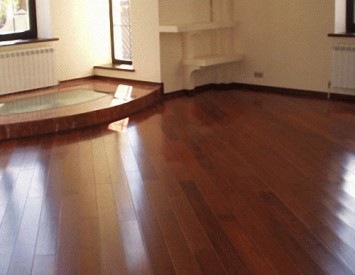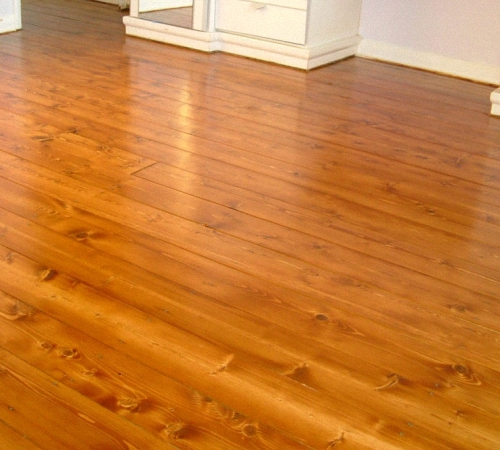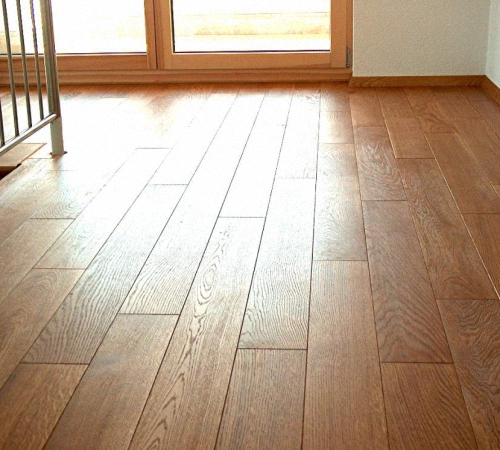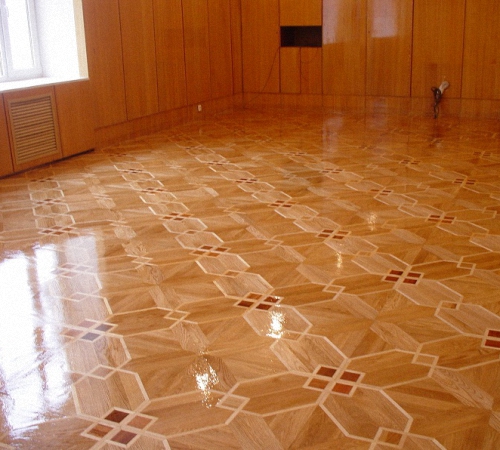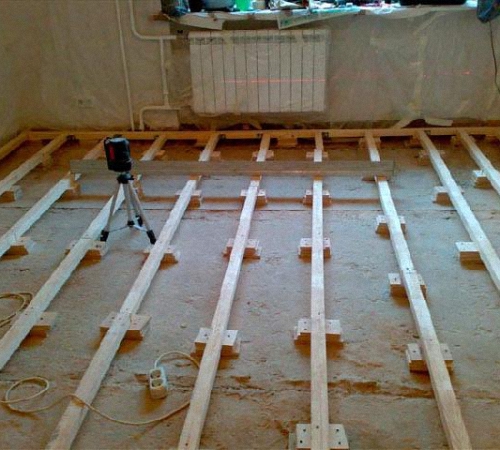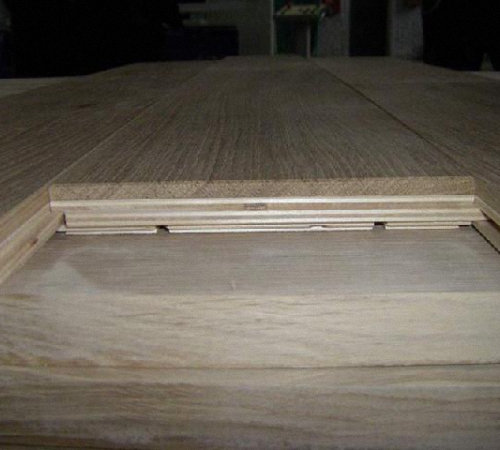One of the most popular and popular flooring for floor is a board. This is high -quality, environmentally friendly material. The floor of wood will give the home warmth, comfort and comfort. This material has high sound insulation, absorbs excess moisture well, maintaining a certain microclimate in the room. Another advantage is the convenience of installation. If necessary, the floor from the floorboard is easy to mount with your own hands.
Content
Choose materials for laying floors from the board
Modern industry offers the buyer a wide range of floor boards. The most popular and convenient material in the work is a dodgy floorboard. On one side of it is a groove, and on the other - a special comb. A similar design allows you to easily assemble the flooring in the lock. For the convenience of assembly, models equipped with a lock from all sides are available. From the inside, the downstone boards for the floors are equipped with a cut. Thanks to it, the flexibility of the material increases.
When choosing a board, pay special attention to its quality. The maximum permissible humidity indicator is 10%. Increasingly, 7%material appears on the market. This option is perfect. Only the use of a dry board will achieve success and mount the durable coating. The presence of knots and inaccuracies is unacceptable. The initial material for the manufacture of a floorboard is high -quality wood of the highest grade.
Boards produce different sizes. The minimum length is 3 m, the maximum is 6 m. The thickness of the board mainly depends on the wood breed. The most in demand is the board with a thickness of 28 mm. For example, a great option for installing floors on lags is to use a pine board with a thickness of 35 mm. But oak boards are thinner. This is due to the increased strength of this material. The width of the board ranges from 8 to 15 cm. The most convenient and demanded size is 10 cm. With an increase in the width, errors of geometric sizes grow. Therefore, wide boards are better not to use.
Increasingly, varnished boards appear on sale. This is a very convenient material. Its use will allow the consumer to save a lot of effort and time. Yes, and it is impossible at home to achieve a similar quality of processing. The only drawback is the high price.
I would like to pay special attention to another version of the floor for the floor - an adelled sex board. It consists of three layers fastened to each other. It has the following advantages:
- Very high quality.
- Good operational indicators.
- Lack of knots and other defects.
- The board is carefully selected in texture and color.
- In changes in indicators such as humidity and temperature, very minor deformations are observed.
- The geometric dimensions are stable in time.
There is only one drawback - the material looks too perfect, unnecessary.
It is better to buy boards for the floor in advance. The purchased material is imported into the finished room no later than 14 days before the start of work. During this time, wood will have time to acclimatize.
Laying labeling methods
There are two main methods of laying the floorboard:
1. Laying a floorboard in a parquet method. It is advisable to use only if there is a flat base. Otherwise, the number of preparatory work increases. There will be a need for:
- performing a concrete screed,
- the use of a self -enforcement mass,
- masonry of the waterproofing layer.
There are several varieties of a parquet method of performing a concrete screed:
- Installation of sex boards directly on the concrete base.
- Installation on the base of waterproof plywood.
- Installation of the floorboard on the old flooring.
The parquet method is extremely rare. This is due to its high labor intensity and significant material costs for preparatory work. The exception is only the installation of the old flooring.
2. Installing the floor on the lags. A very popular way. This technology favorably differs from the parquet method with simplicity and low material costs. Successfully deal with work on anyone. The main thing is to show perseverance, patience and clearly follow the instructions. An important advantage of installing boards on lags is the ability to lay communications under them. A computer cord will no longer be confused underfoot.
Laying a floorboard parquet
Most often, the need to use a parquet method occurs during repair. The owners do not want to dismantle the old flooring. It is used as a basis for a new sex. In this case, there is no need for laborious and expensive preparatory work.
Advice: Before you decide to use the old floor as a basis, make sure its ability to withstand serious loads. A damaged and insufficiently strong half can not be the basis. It must be dismantled.
The order of work when installing the floorboard on the old coating:
- Comers the old floor. Grind it thoroughly. Use the tape machine. The granularity of the abrasive tape is 40 or 60.
- Land the entire surface of the floor with a moisture -proof film made of foamed foam. This stage is not mandatory. Confident in thermal insulation and moisture -proof properties of the old sex - miss it.
- It is recommended to lay new floorboards perpendicular to the floorboards of the old coating. If this is unacceptable, be sure to cover the floor with plywood sheets. The thickness of the sheet is from 12 mm. Pull the plywood. Use the tape machine. Remove all dust and dirt from the surface.
- Lay the floorboards. Try to dock them very tightly with each other. It is recommended to use wedges. Along the perimeter of the room, leave the gap between the flooring and walls 10 mm wide.
- The boards are attached to the base through self -tapping screws, withstanding a step of 250 mm. Mark and drill holes for screws in advance. To improve the aesthetic type of floor covering, the self -tapping screw is poured into the board of the boards by 10 mm. The holes are masked by special traffic jams made of the same type of wood.
- If the floor boards are laid on the base of plywood, and not on a moisture -proof film, glue the boards to the base with parquet glue. The use of glue will improve the clutch of the coating with the base. In this case, it is still necessary to use screws. One glue is not enough.
But if the old floor still had to be dismantled, the process becomes more complex and laborious. This is due to the abundance of preparatory work.
The procedure for the installation of the floor boards on the concrete base is as follows:
1. Determine the level of humidity of the concrete screed. Use any of the two options:
Option number one:
- take a plastic film. Film size 1x1 m;
- stick it on a concrete screed with tape;
- leave for a day;
- take the film. If you find a wet spot on concrete under the film, the base is too wet. Do not rush with the installation of the boards, wait for drying.
Option number two:
- take a rubber rug;
- put it on a concrete base;
- press the brick;
- leave for 24 hours;
- raise the rug. If you find a wet spot under it, do not rush to lay the boards.
Advice: Carefully consider the dark concrete. It is difficult to notice a wet spot on it.
2. When the concrete base finally dries, proceed to laying the boards. Their installation procedure is similar to the option of laying on the old coating. The difference is instead of old boards or plywood base, new boards are laid directly on the concrete base.
Procedure for the installation of floorboards on the base of plywood:
- Take plywood sheets, preferably moisture -resistant. Use the plywood with a thickness of 18 mm.
- Cut the sheet into strips along the narrow side. Stir the width of the strip about half a meter.
- Put the plywood segments on concrete diagonally to the alleged direction of the boards. The distance between the neighboring stripes of plywood is 3 mm. Distance from sheet to wall –1 cm.
- Fix plywood sheets using screws or dowels. About 15 points of fasteners should account for 1 m2. The screws of the screws are drunk deep into the plywood of at least 4 mm.
- The option of fixing plywood is possible with glue. Pay special attention to the compatibility of glue and heat -protective coating of the concrete base.
- Grind the surface of the plywood thoroughly. Use a special grinding machine. The granularity of the abrasive tape is 40-60.
- Clean the surface of the plywood coating from dust.
- Further work on laying the board is similar to the installation on the old coating.
Installation of floor boards on lags
This method is much simpler and more convenient than a parquet method.
Lags are wooden bars. They are made of wood, the humidity of which does not exceed 12%. The section size ranges from 55x70 to 55x100 mm.
The procedure for installing the floor boards on the lags is as follows:
- Prepare the lags. Treat them with an antiseptic and a special solution to protect against parasites.
- Lay on the base of the vapor barrier layer. It can be an ordinary plastic film, foil polyethylene or foam. Lay the coating with an overlap about 20 mm.
- Lay the lags on the base. The distance between neighboring lags in the direction of the future coating is 500 mm, along the axis - up to 300 mm.
Advice: The best direction of the lags is perpendicular to the sun from the windows. Then the mounted floor will look perfect.
- Attach the lags to the base using screws. The screws of the screws should be tidy in the wood at least 4 mm.
- Another option for fasteners is to glue the lags using adhesive or bitumen mastic. The advantage of such a fastener is no danger to damage communication inside the inter -story ceilings.
Advice: Pay special attention to the compatibility of glue and moisture -proof mastic, which is processed the basis.
- Comers the lags. Be sure to use the level. Get rid of excess wood using a rubbish. In the places where the lags will be below the general level, put wooden chips.
- Fix the lags with each other with the help of wooden bars and galvanized corners size 40x40x40 mm. This will strengthen and strengthen the design.
- Lay the void with a warmer formed under the lags.
- Lay the boards on the lags. Get the most tight junction as possible. If necessary, use wedges.
- The length of the first board should be no less than the width of the room. Put it with a comb against the wall. The gap between the board and the crest is at least 10 mm. The first board must be leveled strictly perpendicular to the room.
- For fasteners, use self -tapping screws. Their length should be at least 2 times larger than the thickness of the board.
- Attach the first board next to the crest so that the heads of the screws are closed with skirting boards.
- In subsequent boards, place the screws above each lag at an angle of 45 degrees.
Advice: It is better to drill holes for screws in advance, before laying the board on the lags.
- For chipping boards, use metal brackets. They are clogged in wedges and lags. Two chipping options are possible:
- small and attach each board to the lag. The method is very effective, but very laborious. It is used for carefully dried boards adapted to the room;
- small and attach every fourth board. A faster way. In three intermediate rows, you can use short boards. But the fourth board must be long.
- The last board in the row has a non -standard size. Cut it with a circular saw. In this case, the gap between the floor board and the wall of at least 10 mm should remain.
Final processing
The floor mounted by any of the listed methods must be polished. The main goal of grinding is to eliminate installation defects. Before the grinding start, check whether self -tapping screws are recessed into wood. The self -tapping self -tapping screw can lead to damage not only to coating, but also by a grinding machine.
Use special tape machines or grinding machines. Having completed grinding, thoroughly clean the floor surface of dust. Apply several layers of varnish to the prepared floor. The first is the protective varnish, after its drying is decorative.
